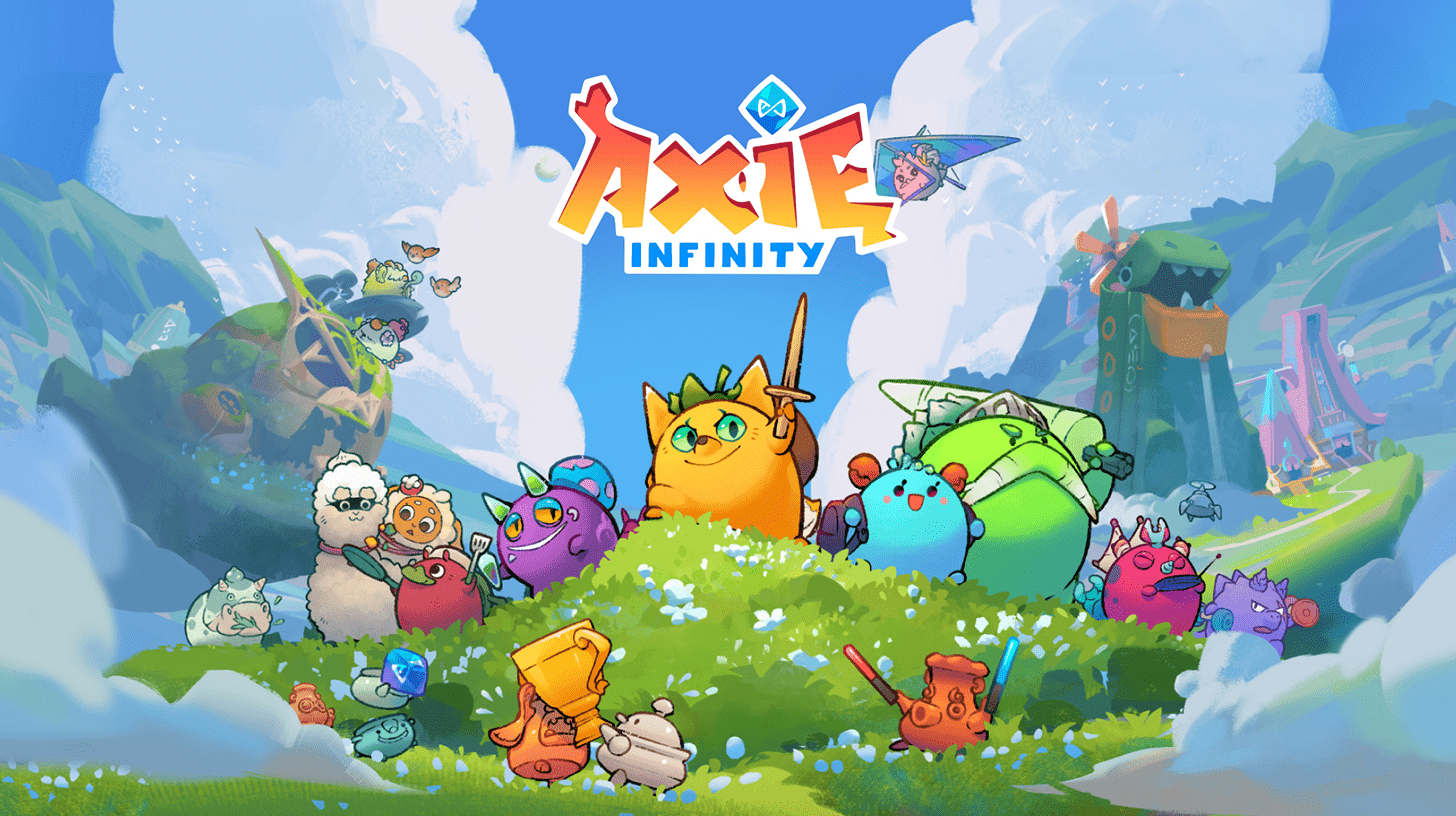Gaming Tokens: The Hidden Engine Behind Crypto Game Economies

Gaming has evolved into a complex economy where virtual achievements translate into real-world value. Gaming tokens, built on blockchain networks like Ethereum and Binance Smart Chain, are the foundation of this digital revolution. Players use these tokens to buy items, unlock special features, and join exclusive events — all while keeping full control of their digital assets.
The rise of play-to-earn (P2E) gaming turned casual gameplay into a new way to earn real income, creating a billion-dollar industry. But the market remains volatile. For example, the AXS token fell from $94.33 in January 2022 to just $9.99 by March 2023.
Today, players can buy, sell, and trade virtual goods directly through decentralized marketplaces using gaming tokens. This cuts out middlemen, lowers transaction fees, and gives players true ownership.
This guide breaks down how gaming tokens work, their economic role, and the technical foundations that make them essential to modern gaming ecosystems.
Fundamentals of Gaming Crypto Tokens
Gaming crypto tokens are digital assets that power blockchain-based game economies. They act as in-game currencies, resources, or even proof of ownership over virtual goods. A well-designed gaming token gives players real incentives to participate, trade, and stay active in the game.
Without strong token fundamentals, even the most advanced and visually impressive games struggle to build loyal communities or maintain long-term success. Tokens aren’t just optional features — they are the foundation that holds virtual economies together.
Token Economics in Virtual Game Worlds
Tokenomics forms the core of any blockchain-based game economy. It defines how in-game currencies work, how they gain value, and how that value stays stable over time. A game’s economic foundation often decides whether it thrives or collapses.
Strong tokenomics go beyond just handing out rewards — they create real value for players. Games that ignore this usually see their ecosystems break down when inflation rises or player engagement drops.

Tokenomics Design Principles for Sustainable Game Economies
Blockchain games succeed when their token economies focus on delivering real value to players — not just on controlling token supply. Players need to feel that tokens have purpose inside the game world, not just outside it.
The most successful gaming economies follow a few key principles:
- Clear utility: Tokens must be useful for in-game actions, upgrades, governance, or access to exclusive content.
- Fair distribution: Rewards should balance the interests of developers, investors, and players.
- Controlled supply: Limits on token creation help keep inflation under control and maintain value.
- Player governance: Giving players a voice in economic decisions strengthens loyalty and engagement.
- Token burning mechanisms: Reducing the number of tokens in circulation can help stabilize or increase value over time.
The biggest factor in a token’s long-term success is real utility. Tokens tied to meaningful actions, voting rights, or player benefits create stronger, more resilient game economies.
Inflation vs. Deflation: Balancing Token Supply
Game economies usually follow one of two models: inflationary or deflationary. Each model shapes how players interact with tokens — and how those tokens hold value over time.
| Feature | Inflationary Tokens | Deflationary Tokens |
|---|---|---|
| Supply | Increases over time | Fixed or decreases |
| Examples | Solana (SOL), Polkadot (DOT) | Bitcoin (BTC), BNB |
| Main Use | Everyday gameplay spending | Value storage and investment |
| Liquidity | Generally higher | May face liquidity challenges |
| Value Trend | Gradual loss of purchasing power | Tends to increase in value |
Players spend inflationary tokens more easily because holding them reduces their worth over time. Deflationary tokens, on the other hand, encourage saving and can become too valuable for everyday use.
Some blockchain games mix both models — burning tokens during high-demand periods or offering staking rewards that temporarily remove tokens from circulation. A smart balance helps keep the game economy healthy and active.

Value Creation Mechanisms in Token-Based Games
Game developers use several strategies to build and protect the value of their tokens over time:
- Token burning: Permanently removes tokens from circulation to reduce supply and support token value. Games often burn tokens during periods of high activity to fight inflation.
- Staking systems: Let players lock up their tokens to earn rewards. This keeps players invested and reduces the number of tokens actively circulating.
- Treasury reserves: Act like in-game banks, collecting and distributing tokens based on player activity to help stabilize prices and manage token flow.
- Governance voting: Gives token holders the power to influence game development, economic policies, and future updates, adding utility beyond simple trading.
Building real token value isn’t just about limiting supply — it’s about creating systems that encourage long-term engagement and reward committed players.

Case Study: Axie Infinity's Economic Collapse (2022)
Axie Infinity showed what can happen when tokenomics aren't built for long-term sustainability. The game attracted millions of players — many from developing countries — who hoped to earn real money through play.
But the system depended on constant growth. Axie’s own white paper admitted that it needed a steady flow of new players to keep the economy running — a setup similar to a Ponzi scheme.
When growth slowed in early 2022, problems exploded. More players meant more Smooth Love Potion (SLP) tokens, flooding the market and crashing prices. SLP fell from $0.34 to less than a penny. At the same time, Axie NFTs lost 99% of their value, dropping from $340.76 to just $3.33.
Daily active players plunged from 2.7 million to 760,000. Rewards shrank so much that players could no longer earn meaningful income.
Axie's collapse is a clear warning: without careful control over rewards, token supply, and player incentives, even the biggest blockchain games can fail.
Gaming Tokens as Financial Instruments
Gaming tokens do more than just fuel in-game transactions — they also act as real financial instruments in broader digital economies.
By staking gaming tokens, players can lock up assets to earn passive rewards and often receive governance tokens in return. Governance tokens allow players to vote on critical decisions, like future development priorities, economic policies, or how community funds are used.
Staking brings several benefits:
- Players earn passive income.
- Reducing circulating supply helps support token value.
- Some networks become more secure through proof-of-stake systems.
- Players can unlock exclusive features or events.
Governance systems shift decision-making power from developers toward the community, giving players a real voice in how a game evolves. Through proposals and votes, token holders help shape the future of gaming ecosystems.
Gaming tokens have moved far beyond simple spending tools — they are now central to investment strategies, community governance, and the long-term stability of blockchain games.

Secondary Markets and Token Liquidity
The real strength of gaming tokens comes from secondary markets — places where players can freely buy, sell, and trade their assets outside the original game.
Unlike traditional gaming items locked inside company servers, blockchain-based tokens live independently on public ledgers. This gives players true digital ownership and the ability to move assets between different platforms.
However, liquidity — the ability to quickly buy or sell without major price changes — varies widely across projects:
- Popular games like Axie Infinity still generate around $10,000 per day in transaction fees.
- Strong liquidity creates extra revenue streams for developers and keeps economies active.
- Lesser-known tokens often face liquidity challenges, making trades slower and more expensive.
Blockchain scalability also matters. Gaming requires a high volume of fast transactions, which pressures traditional blockchains. That’s why some projects now use specialized gaming networks like Ronin to boost performance and cut fees.
Healthy secondary markets are crucial. Without them, even the best-designed gaming tokens risk losing their real-world value.
Investment Potential and Risk Assessment
Gaming tokens offer exciting investment opportunities — but they also carry serious risks.
Volatility is one of the biggest concerns. Token values can swing sharply based on player adoption, gameplay updates, broader crypto market trends, or unexpected technical issues. Smart contract vulnerabilities pose another major risk, with security flaws sometimes leading to total asset losses.
Smart investors spread their bets across multiple projects instead of focusing on a single token. Successful strategies usually involve:
- Researching development teams.
- Analyzing token utility and economic models.
- Checking community activity and project transparency.
- Evaluating how well the tokenomics are built for long-term sustainability.
Regulation is another growing factor. As the crypto gaming sector expands, regional laws and international policies could directly impact how tokens are used, traded, and valued.
Understanding both the upside and downside helps investors approach gaming tokens with realistic expectations — and better protect their portfolios.

Technical Implementation of Cryptocurrency Gaming
Behind every blockchain-based game is a complex technical framework that makes secure, transparent, and automated gameplay possible. These systems are the foundation that supports gaming token economies and solves key challenges like security and interoperability.
At the heart of it all are smart contracts — self-executing programs that automate core game functions without needing intermediaries. Smart contracts manage things like token rewards, marketplace transactions, asset creation, and even player governance.
A real-world example: Microsoft’s Xbox used smart contracts to automate royalty payments for game publishers. This system cut processing times by 99%, reduced operational workload by 40%, and eliminated the need for manual reconciliation.
In blockchain games, multiple smart contracts usually work together:
- Core token contracts manage the creation and distribution of tokens.
- Marketplace contracts handle buying, selling, and trading of in-game assets.
- Governance contracts support community voting and decisions.
- Staking contracts reward players who lock up their tokens.
A well-designed technical architecture creates smoother gameplay, stronger security, and a better overall player experience.
Cross-Chain Interoperability Solutions
Cross-chain technology plays a critical role in modern blockchain gaming. Without it, each blockchain stays isolated — great internally, but unable to interact with other networks.
Interoperability changes that by allowing assets and data to move freely between blockchains. This brings three major benefits to gaming:
- Asset mobility: Players can move their tokens and NFTs across different games and ecosystems.
- Blockchain specialization: Developers can choose different blockchains based on speed, cost, or security needs.
- Unified liquidity: Combining resources across chains makes it easier to buy, sell, and trade assets.
Protocols like Chainlink’s Cross-Chain Interoperability Protocol (CCIP) help developers build connected smart contracts. For example, rare in-game items might be minted on a high-security network like Ethereum, while actual gameplay runs on a faster, cheaper blockchain.
Cross-chain solutions create more flexible gaming ecosystems where players aren’t locked into one chain — and developers can focus on delivering better experiences without technical limits.

Security Considerations for Token-Based Games
Security is the single biggest concern for blockchain gaming ecosystems. While blockchain technology offers strong protections by design, poor implementation can still expose players and developers to serious risks.
Common threats include:
- Smart contract vulnerabilities like reentrancy attacks and logic flaws.
- Private key theft through phishing, malware, or poor wallet management.
- Front-running attacks where bots exploit pending transactions.
- NFT scams and fake marketplace listings targeting players.
Protecting gaming economies requires a multi-layered approach:
- Regular third-party security audits to catch vulnerabilities before attackers do.
- Multi-signature wallets that require multiple approvals for transactions.
- Stronger player verification to reduce fraud and identity theft.
- Zero-knowledge proofs to boost privacy without sacrificing transparency.
As blockchain gaming grows, security measures must constantly evolve. Games that invest early in strong security will have a huge advantage in building lasting, trusted communities.
Conclusion
Gaming tokens are reshaping digital economies by giving players true ownership, real earning potential, and a voice in how virtual worlds evolve. Blockchain technology has turned in-game currencies and assets into powerful financial tools — but building a successful gaming economy takes more than just launching a token.
The key to lasting success lies in smart tokenomics, real value creation, tight supply control, and strong community involvement. The collapse of Axie Infinity shows what happens when these elements fall out of balance.
Secure smart contracts, scalable cross-chain solutions, and active governance structures are now essential parts of any sustainable gaming ecosystem. Microsoft’s example with blockchain-based royalty systems proves that efficient, transparent models aren’t just possible — they deliver real-world results.
As markets, technology, and regulations continue to evolve, games that focus on player rewards, security, and community-driven growth will define the next generation of blockchain gaming.
Gaming tokens are no longer just a trend — they are becoming the backbone of future virtual economies.
